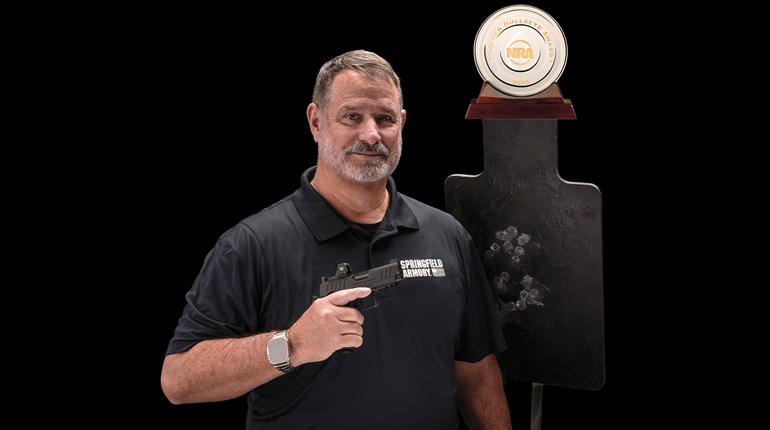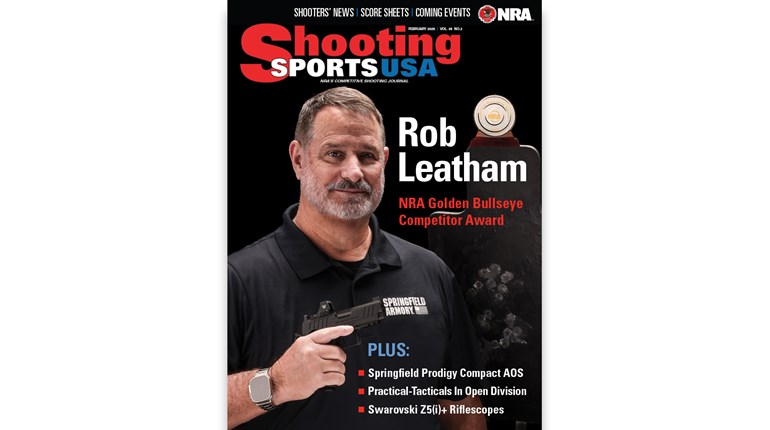
We all want to raise our level of skill, but why is gaining confidence equally if not more important than improving your physical skills? Having all the skill in the world with no confidence is just as bad as your mouth writing checks that your skill level can’t cash. So, what does it take to increase both your level of skill and the confidence to pull it off?
Whether it’s shooting, martial arts, defensive driving or any other physical (or mental) skill, the symbiotic bond between skill and confidence must be clearly understood and then fostered.
Skill is commonly defined as doing something well. “He or she is a skilled practitioner,” means that there is a certain level of expertise demonstrated. However, there are varying levels of skill. Basic or intermediate skills are different from “highly skilled.” As there are varying layers of skill, so are there varying levels of confidence. In fact, the two—skill and confidence—are inextricably bound. You cannot possess one without the other if you expect to do something well in any practical application.
The topic here is shooting, of course, but the principles apply to all forms of physical mastery. Given my background in the martial arts, I have something with which to compare my current continuing education in learning how to shoot well.
One of my master martial-arts instructors, Guru Dan Inosanto, states that there are four levels of competency. Unconscious Incompetence: You don’t know what you don’t know. Conscious Incompetence: You realize how much you don’t know. Conscious Competence: Your skill level is raised, but only when you think about it (mental focus) and with great effort. Unconscious Competence: You can perform quite well without thought and with minimal effort. Unconscious competence is the earmark of a master practitioner.
One of my master shooting instructors, Rob Leatham, states that to raise your skill level, it is first necessary to raise your level of understanding. If you don’t understand what you’re trying to do, then there’s little chance of you ever raising your skill in doing it.
Your first step is to increase your level of understanding. As your level of understanding increases, this causes you to know what and how to practice, which in turn allows you to discover the difference between “doing it right” and “doing it wrong.” Once you’ve figured out the difference between what works (right) and what doesn’t (wrong) then you have achieved the point in your training where you can begin making gainful repetitions.

One of my edged-weapons masters, Punong Guro Edgar Sulite, once said; “Repetition is the mother of all skills.” However, it is also true that practice makes permanent. If you do something incorrectly for thousands of reps, now you must unlearn or “break” that training scar and do enough repetitions to undo the damage and then run the next set of thousands of reps to burn it in correctly.
Raising your level of understanding increases your ability to complete successful repetitions, which leads to familiarization. Repetition is the pathway to familiarization. The more reps you get, the greater your familiarization.
Take presentations for example. Your first day on the range, you receive professional instruction on a four- or five-step drawstroke, punching out to a strong-hand-supported firing position. On day one, working with a qualified instructor, you put in about 80 repetitions. Great, you’ve raised your level of understanding from not knowing how to present your firearm, to knowing exactly which steps, each of the points and nuances of those steps and in what order to execute them.
Consequentially, you have raised your level of familiarization. In the beginning, you were completely unfamiliar because you’d never done it before. After about 80 repetitions you have more familiarity. You have taken measurable steps away from unconscious incompetence.
Over the decades, many of my students would pose a common question: “How many reps does it take to really get it?” A tough question to answer in full, because what does it mean “to really get it?” If that means doing something well, then it’s far more than 80 reps. Word from experts in the know (Master and GM level shooters) claim it’s anywhere from 5,000 to 10,000 reps based on the learning ability of the individual shooter.
It’s been my observation and personal experience over three decades, and across a broad spectrum of tens of thousands of students, that the number is closer to 10,000. Either way you look at it, the greater the number of reps, the greater your level of understanding and the greater your level of familiarity.
Moving further up the skills/confidence ladder, multiple (correct) repetitions contribute to your movement further away from unconscious incompetence. At some point in your training experience increased familiarization converts to comfort. It can be said at this level that you are comfortable with your practice.
The road to comfort begins with increasing your understanding which affords you gainful repetitions, which makes you more familiar. The greater your familiarity, the more comfortable you become.
It turns out that skill and confidence, although integral, are only waypoints on the path to consistent on-demand performance. You can have the technical understanding and you can even have the skill, but converting your skill and confidence to on-demand performance is an entirely different matter.
Training extensively the last few years with several respected Masters and Grandmasters, my shooting partner Tom Rovetuso (USMC and retired SWAT Commander at Lake County, IL, Sherriff’s Office) and I stumbled across an interesting discovery during our blood, sweat and tears on the range. It’s something we call “The four C’s of on-demand performance.”
Comfort leads to Confidence which leads to Consistency which leads to Competence. The competence we refer to is unconscious competence.
Once you have achieved comfort (a four-part process), your next steps lead you down a long and winding road toward confidence. Although there’s no quantifiable line of demarcation to know when you have achieved comfort, it’s something quite discernible. You’ll know it when you feel it.
Think about the first time you got behind the wheel of a car to drive with a driving instructor. White-knuckled and eyes wide open, the gas pedal, the brake pedal, steering wheel, et al, were all new tools sitting there with which you had no prior experience.
As you gained greater understanding of these tools and how they worked together to control the vehicle, you were able to put in some gainful repetitions by turning right, slowing down, turning left, using your directional and pumping the brake pedal a few times. After enough repetitions, you gained familiarity and over time you became comfortable driving.
Given more time driving and in different environments such as parking lots, streets, highways, traffic jams, etc., you gained a level of confidence. The more you drive the car, the greater your confidence. In fact, regardless of your environment or even changes in conditions such as day, night, rain, snow, etc., you’re able to confidently display your ability to control the vehicle (on-demand performance) which demonstrates consistency.
Given even more time and now with no new or unfamiliar environment or driving conditions to challenge your skills, you have become competent and you don’t even need to think about it anymore. You have reached a stage of unconscious competence.
Going back to the example of learning how to present your pistol from the holster, on day one (introduction) if you’ve never done it before (other than seeing it in the movies), you have little or no knowledge as to what the steps are, in what order they must be performed and the technical details of each. At this level, you simply don’t know what you don’t know (unconscious incompetence).
After a few days of detailed, professional instruction, you increase your level of understanding. Armed with this knowledge, you now can begin accumulating legitimate and effective repetitions. Over time, these repetitions lead to your familiarity with the individual steps of the presentation (conscious incompetence).
Given more time, in continuing your training you may enter a phase of self-discovery. You may find certain nuances about your presentations that your instructor never told you about or which he or she allowed you to discover on your own.
You may find by continual, correct repetitions that your comfort increases and that you have developed this new skill which boosts your confidence. Add even more time and more reps and you find that at certain times, if all your planets align (you do everything right and at the right time and in the right sequence and with unerring mental focus), you can consistently execute good control and pretty much hit your mark about 85 percent of the time (or even more). At this level, you have now reached conscious competence.
To quote lyrics from an Eagles’ song “every form of refuge has its price,” the same holds true for reaching conscious competence. The price for entry at this level is time, and it’s not something that can be rushed. You can plant a healthy tree in the most-fertile soil, water it and nurture it daily. No matter how much effort you put into growing that little tree, it will not bear fruit any sooner than it takes for it to do so naturally.
One of the greatest martial artists of our time, Bruce Lee, once said “I fear not the man who has practiced 10,000 kicks at once, but I fear the man who has practiced one kick 10,000 times.” In achieving conscious competence, patience and perseverance become unexpected by-products of your effort and commitment.

At this stage of increased skill and confidence, your training tends to become frustrating, because your level of understanding will always exceed your level of skill. What becomes even more frustrating is when you discover that your level of skill will always exceed your level of performance.
The perpetual struggle is to try and decrease the gap between your level of understanding and your level of skill. The struggle becomes even greater when you try and decrease the gap between your level of skill and your level of performance.
Anyone can press a trigger, so the struggle at the upper levels is not a mechanical one. The battle rages on in between your earmuffs as it becomes a contest of self-mastery. You end up fighting yourself mentally. It takes 100 percent of your mental effort to not use 100 percent of your mental effort. In other words, you must learn to “let it go” rather than “make it go.” You must allow each piece of your hard-earned skill set to fall effortlessly into your subconscious where you don’t need to think about it or consciously focus on it. Although a challenge in practical application, mentally processing that “I believe” button must become standard operating procedure.

As part of the Leatham Shooting System, Master Instructor Rob Leatham teaches no less than 16 recommended pre-ignition checkpoints prior to a trigger press. It’s not possible for us common earth-walkers to keep all 16 points in our mind at the same time. It’s a miracle if we can hold on to just one or two. The only way to do it is to move your skills to your subconscious. You will never reach the breakneck speed and accuracy of the masters by thinking about anything. In a world where decisions are made in thousandths of a second, thoughts take too long to process.
It has been documented in most cases, depending upon skill and experience, there can be a decrease in performance ranging from 10 to 20 percent between one’s skill level and on-demand performance.
Applying numbers for illustration, consider a shooting standards test. You can run the standards test in your pajamas all by yourself on a pleasant sunny afternoon on the range and find on a good day that you can achieve a cumulative score of 20 seconds. Now place yourself in a match (competition) or in a real-world defensive situation (tactical) where there is increased pressure, your performance could drop to as low as 24 seconds or more depending upon the level of duress.
The higher your skill level, the lower the variance. Certain military special-operations personnel are said to maintain around a 10-percent variance. Hence, the reason why they might hypothetically train to 110-percent standards and testing to meet such a high-pressure performance demand.
On-demand performance; to place a round precisely where you want it and when you want it regardless of circumstance or condition, is the true mark of a master shooter. It’s something we all lust after and train for—a destination that cannot be reached without first passing the milestone markers of skill and confidence.






































